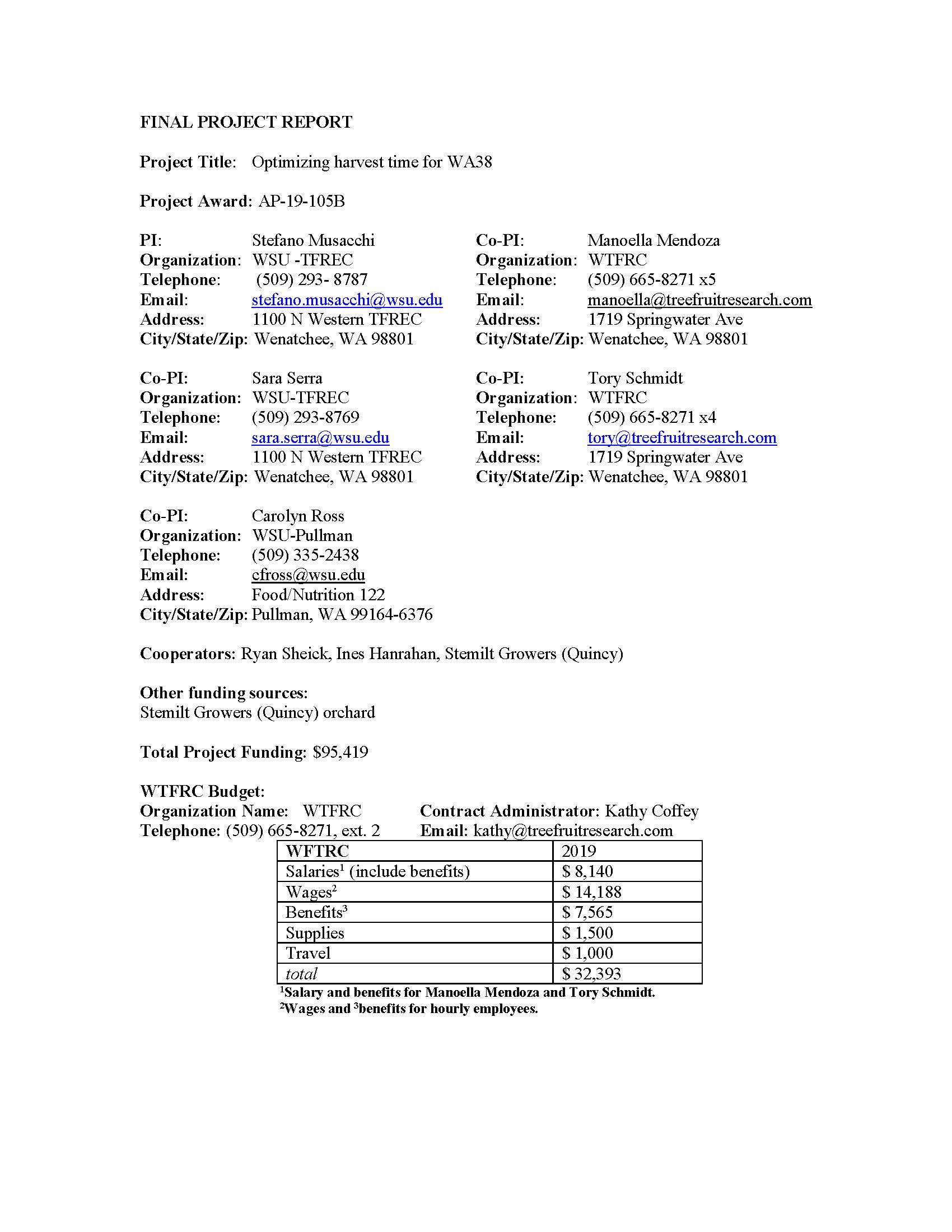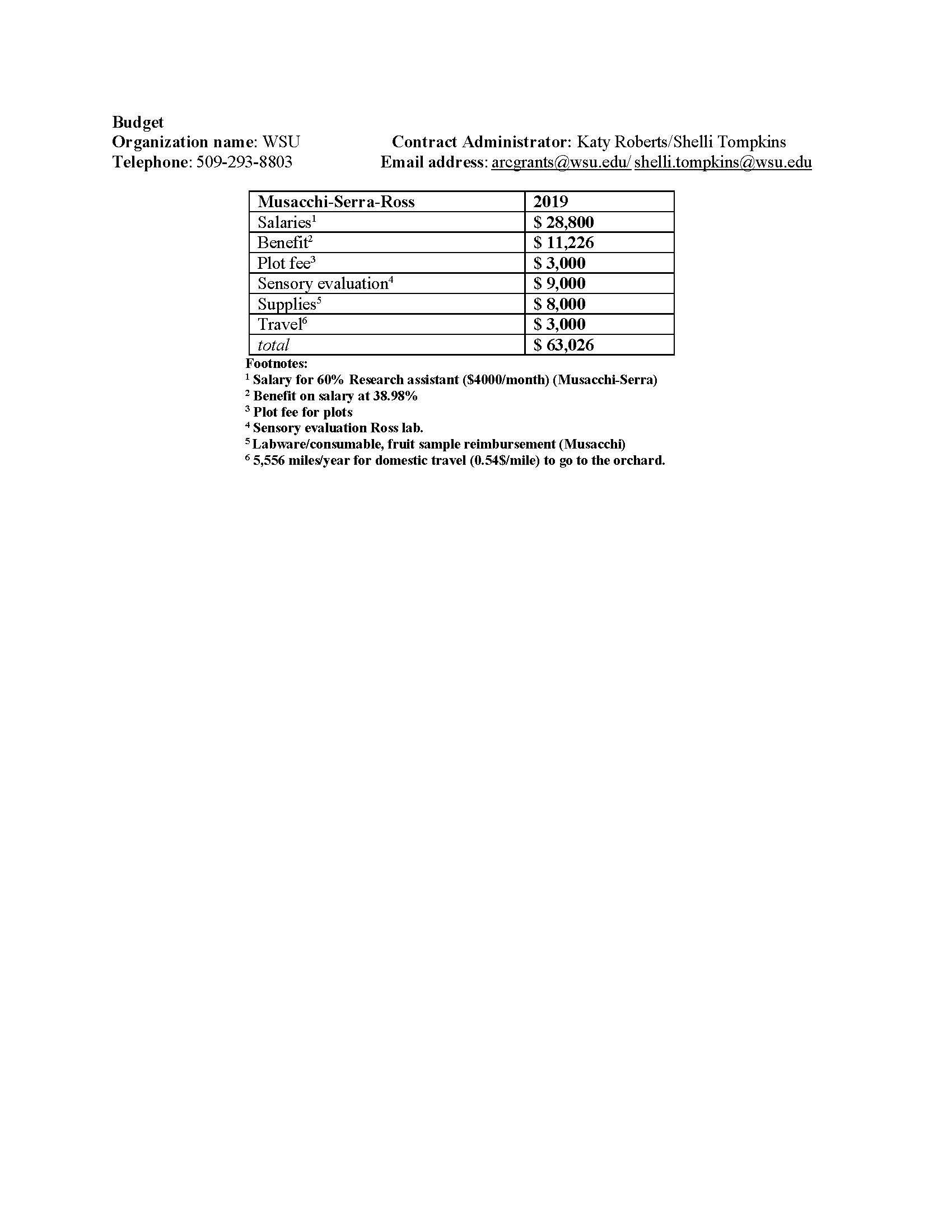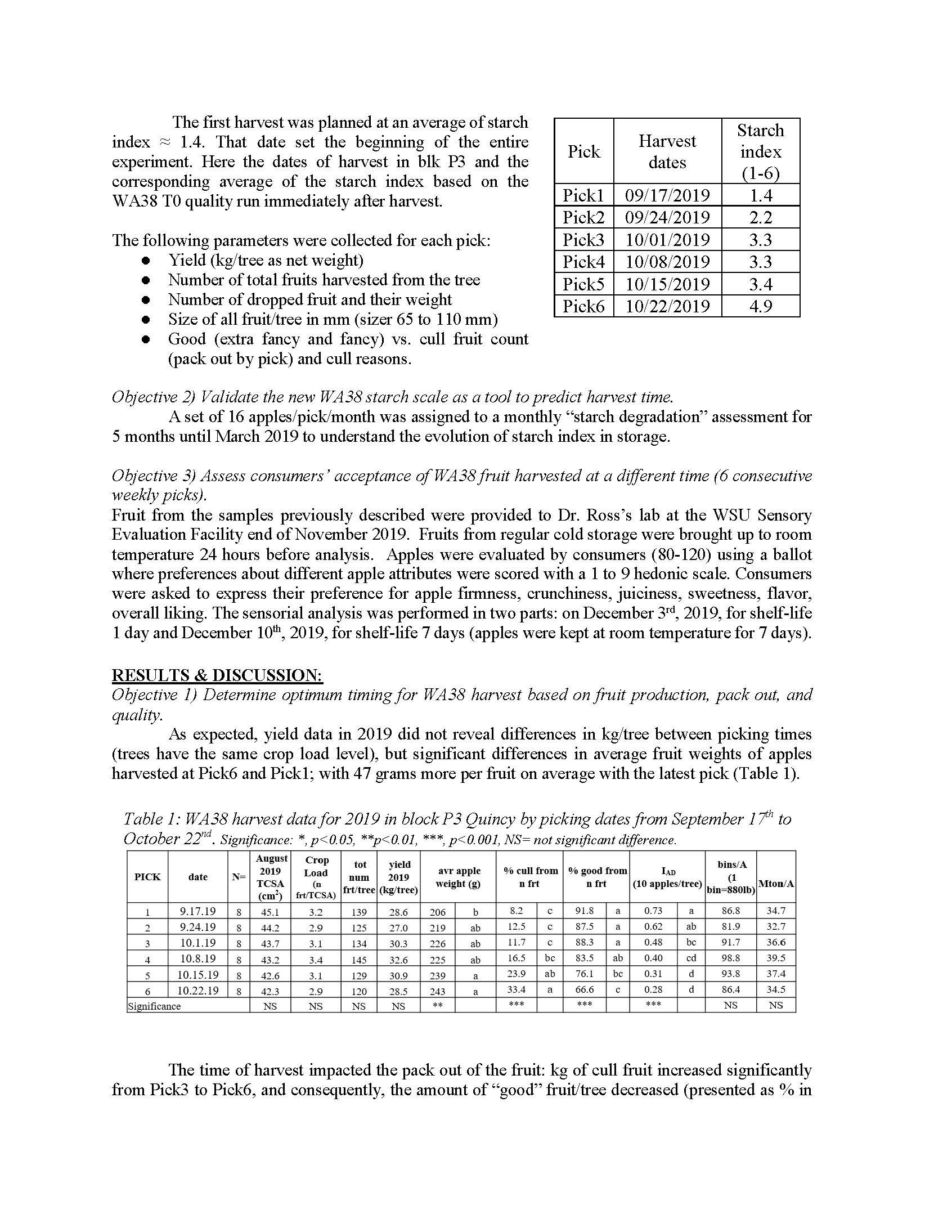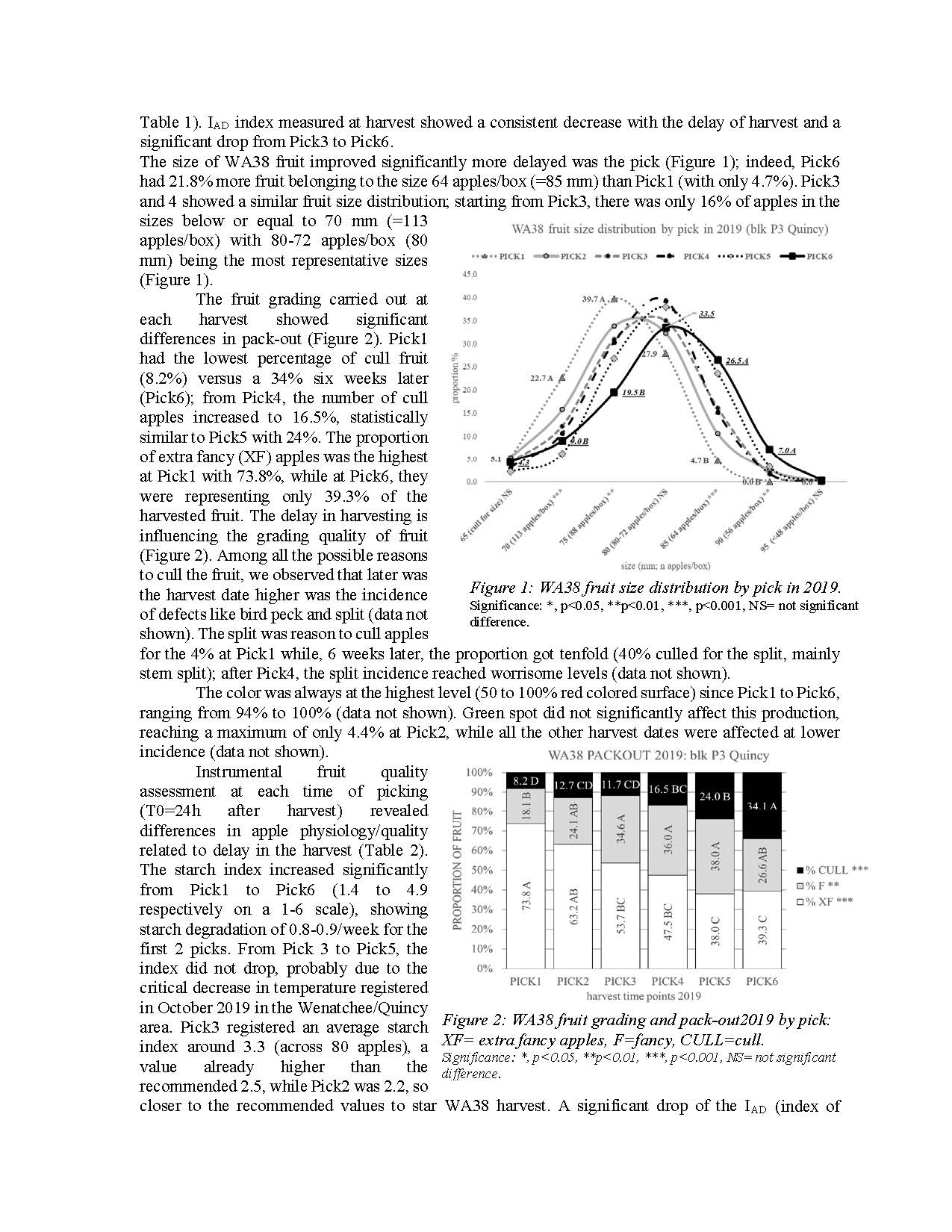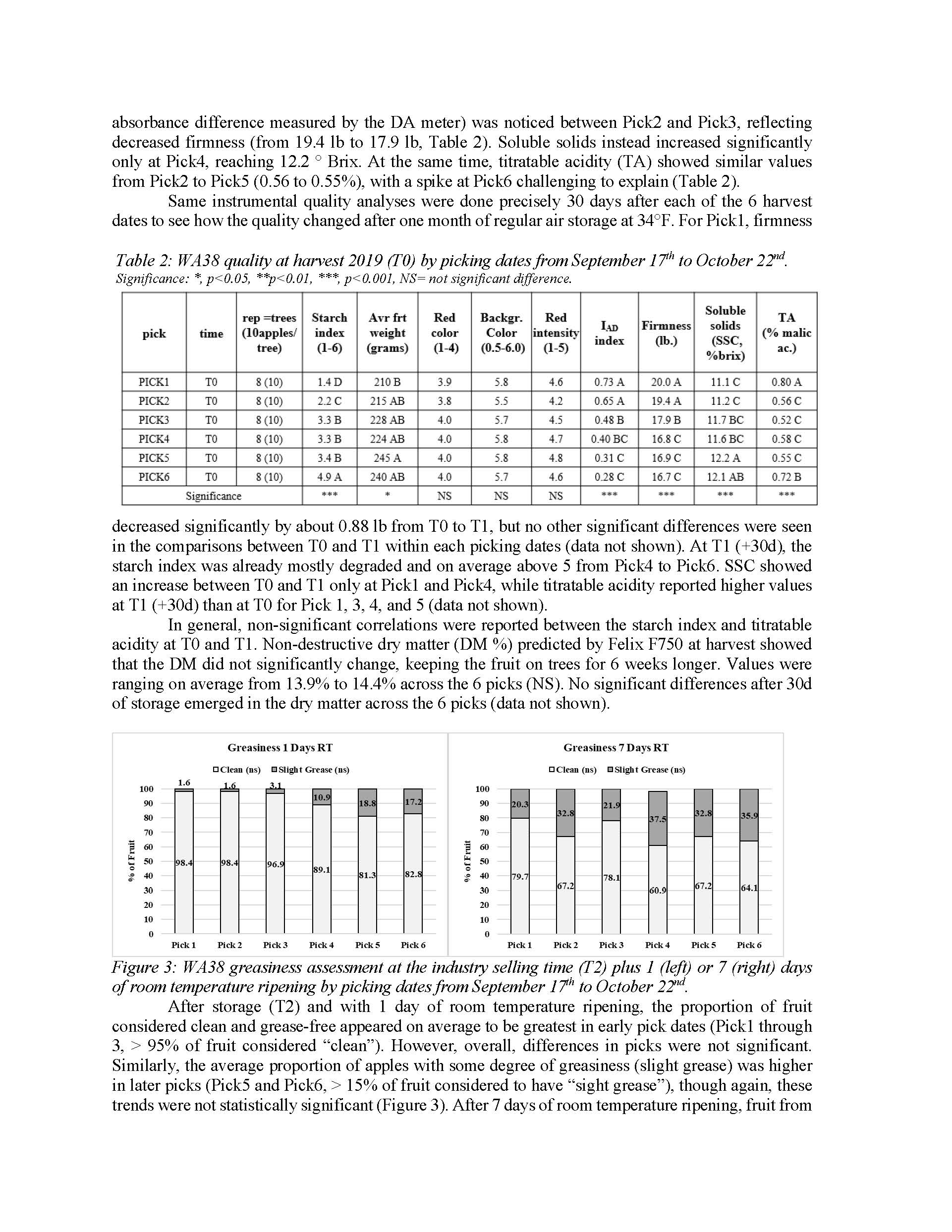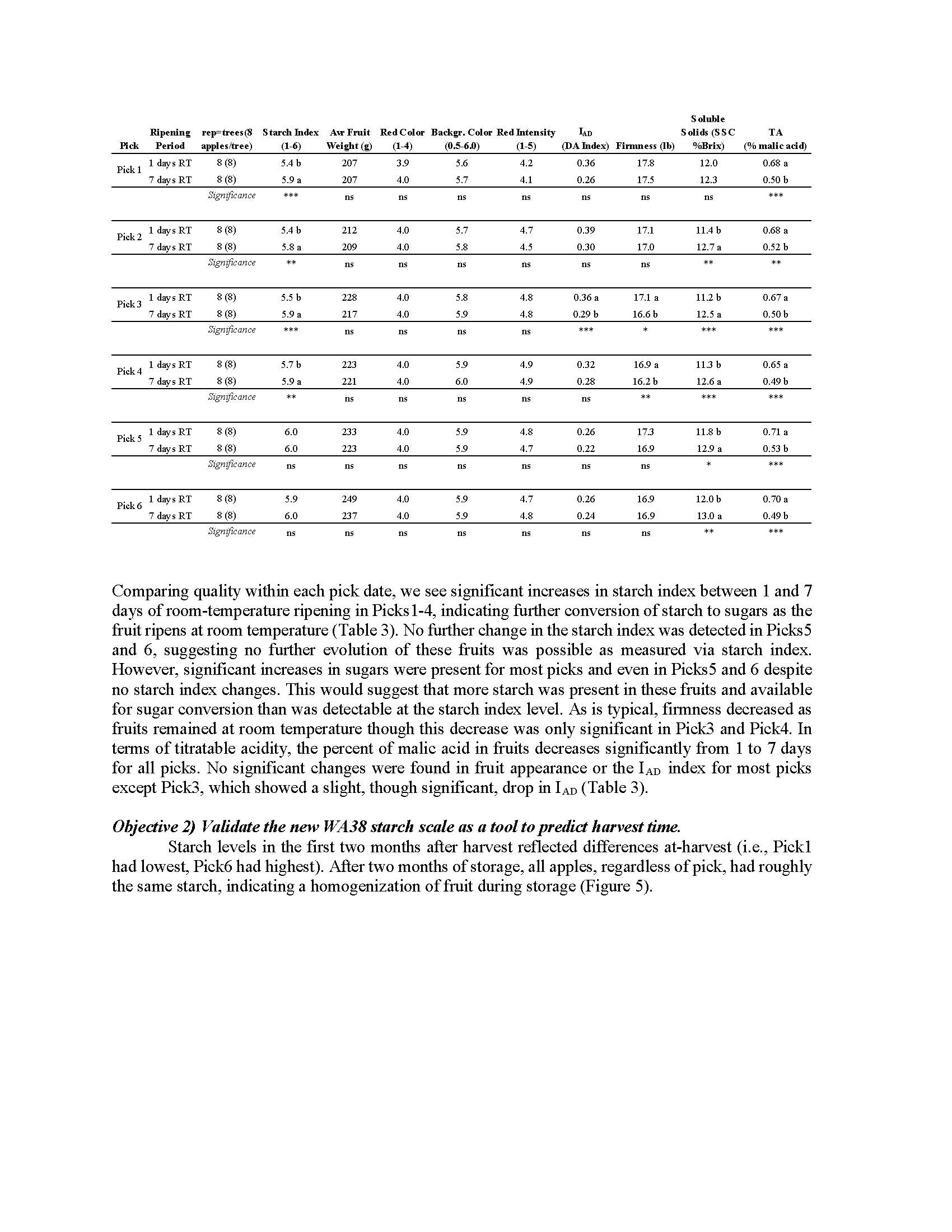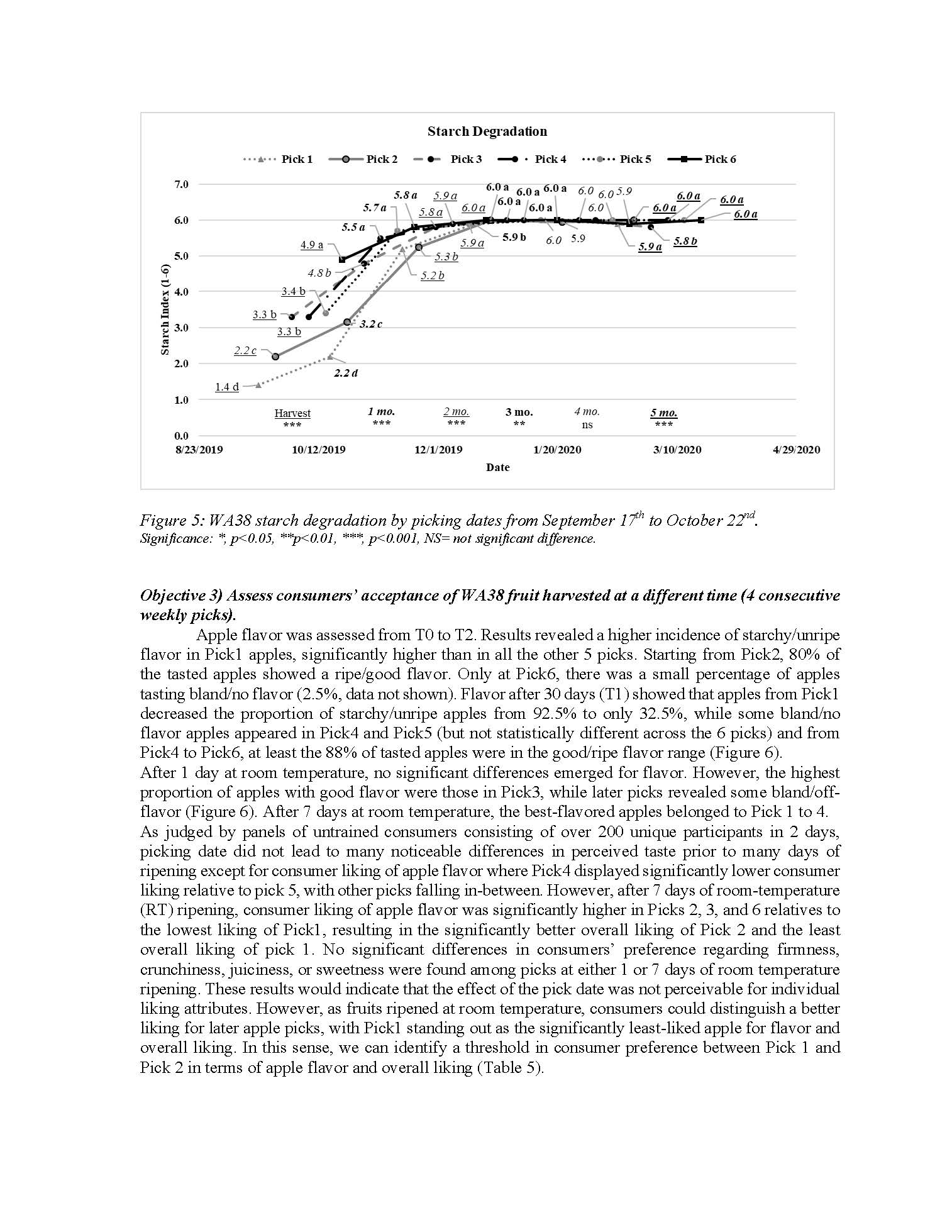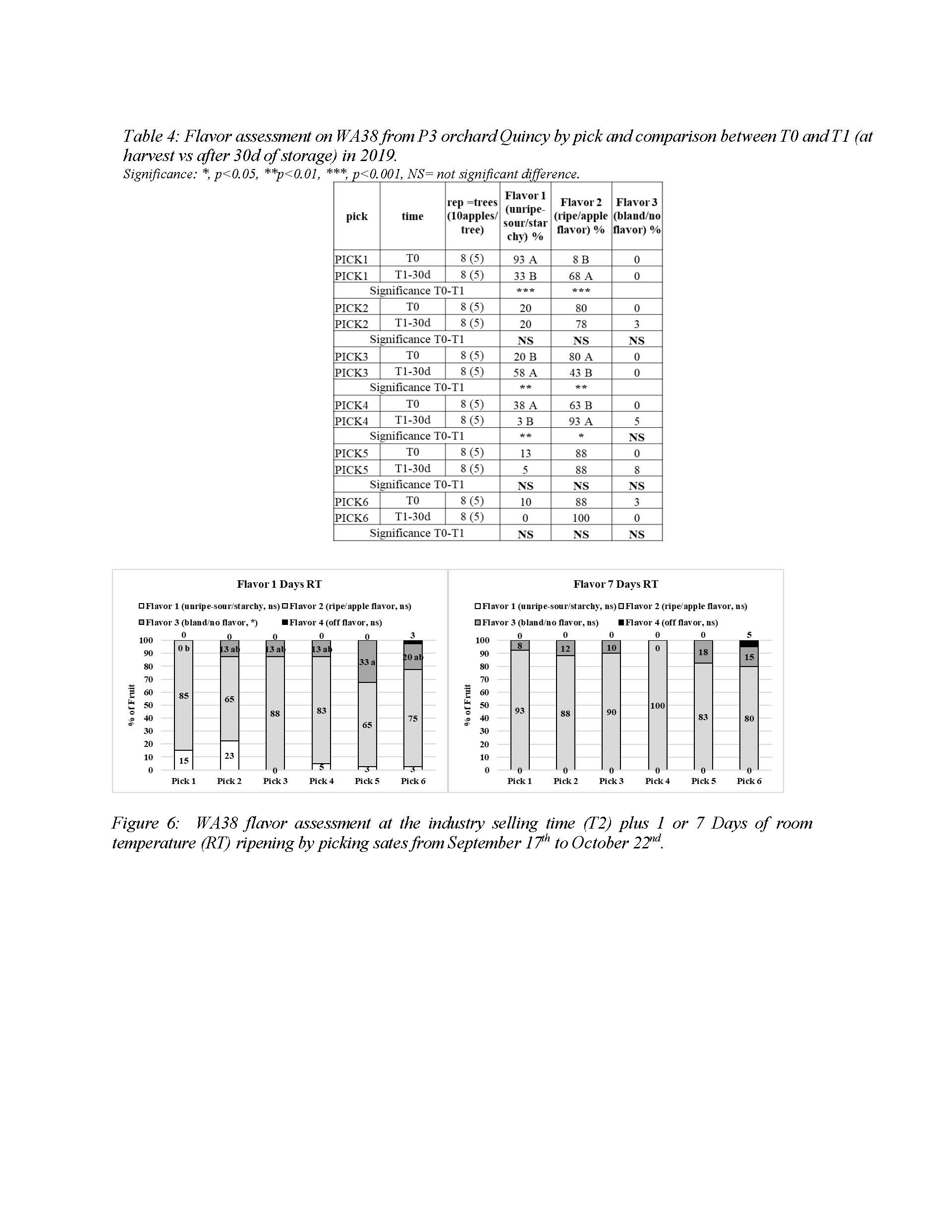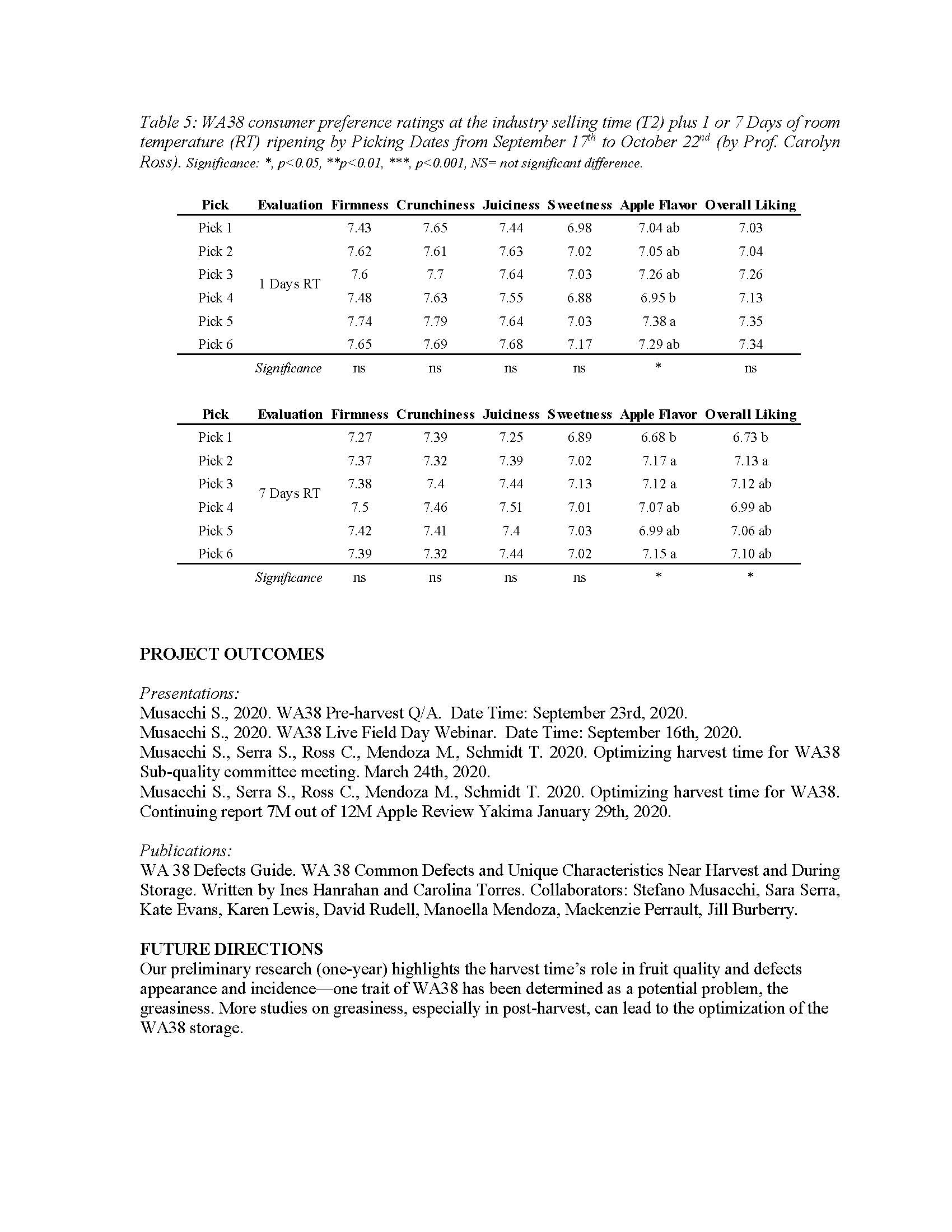Optimizing harvest time for WA38
Author: Stefano Musacchi, Manoella Mendoza, Sara Serra, Tory Schmidt, Carolyn Ross
Published: 2021
Summary: The project wants to investigate the effects of harvest time on fruit quality, starch degradation, and consumer acceptance of WA38 apples. WA38 internal quality of the fruit at harvest and during storage varies depending on the date of harvest. The most utilized method to determine harvest time in the apple is to estimate internal starch content by an iodine-staining index. Growers, packers, and researchers widely utilize the iodine test because it is a feasible and fast tool to adopt from the field to the lab. WTFRC has recently developed a specific WA38 starch scale (starch index 1-6) because the cultivar presents two patterns of starch degradation. The project wants to determine the starch degradation trends on different harvest days. Within a WA38 P3 block in Quincy (trees planted in 2008 and grafted on M9337, 12 ft x 3 ft, 1210 trees/Acre, and 1360ft of elevation), in August 2019, we selected 48 trees for this trial. For each of the 6 harvests (picks), we randomly choose 8 trees available as reps. The first pick starts on September 17th, 2019, and the last ends on October 22nd, 2019. The size of WA38 fruit improved significantly more delayed was the pick; indeed, Pick6 had 21.8% more fruit belonging to the size 64 apples/box (=85 mm) than Pick1 (with only 4.7%). The color was always at the highest level (50 to 100% red colored surface) since Pick1 to Pick6, ranging from 94% to 100%. Green spot did not significantly affect this production, reaching a maximum of only 4.4% at Pick2, while all the other harvest dates were affected at a lower incidence. The delay in harvesting is affecting the grading quality of fruit. Among all the possible reasons to cull the fruit, we observed that later was the harvest date higher was the incidence of defects like bird peck and split. The split was reason to cull apples for the 4% at Pick1, while 6 weeks later, the proportion got tenfold (40% culled for the split, mainly stem split). After storage, the proportion of fruit considered clean and “grease-free” appeared on average to be greatest in early pick dates (Pick1 through 3, > 95% of fruit considered “clean”). Similarly, the average proportion of apples with some greasiness (“slight grease”) was higher in later picks (Pick 5 and 6). After 7 days of room temperature ripening, apples from all picks showed an increase of greasiness. Non-destructive assessment of dry matter and soluble solids revealed no significant differences among pick dates at both 1 and 7 days of room temperature ripening at the industry selling time, confirming a previous project’s findings. At industry selling times (December 2019), starch differences among pick dates were subtle but significant and reflected the patterns seen at-harvest. Comparing each pick date, we saw significant increases in starch index between 1 and 7 days of room-temperature ripening in Pick1-4, indicating further conversion of starch to sugars as the fruit ripens at room temperature. No further change in the starch index was detected in Pick5 and Pick6, suggesting no further evolution of these fruits were possible as measured via starch index. Starch levels in the first two months after harvest reflected differences at-harvest (i.e., Pick1 had lowest, Pick6 had highest). After two and a half months of storage, all apples had roughly the same starch, regardless of the picking date, indicating a homogenization of fruit during storage. Flavor after 30 days (T1) showed that apples from Pick1 decreased the proportion of starchy/unripe apples from 92.5% (at harvest, T0) to only 32.5%, while some bland/no flavor apples appeared in Pick4 and Pick5 and from Pick 4 to Pick6, at least 88% of tasted apples were in the good/ripe flavor range. As judged by panels of untrained consumers, consisting of over 200 unique participants in two days, picking date did not lead to many noticeable differences in perceived consumer preference. After 7 days at room temperature, Pick2 and Pick3 showed a numerically higher overall liking value than the other harvest dates.
Keywords:

